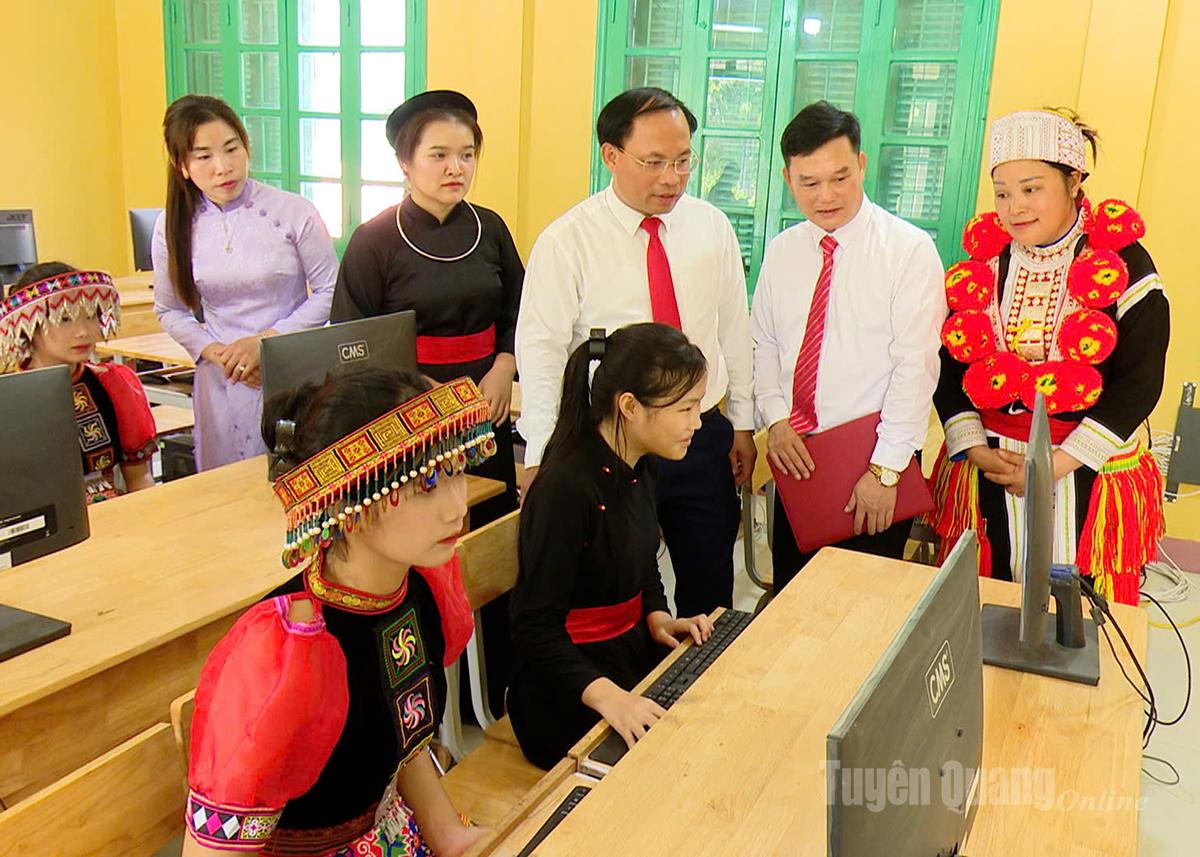Creating the best conditions for boarding students
Caring for facilities and living conditions for boarding students has always been a priority of local authorities and sectors across the province, creating the best possible conditions to improve teaching and learning quality and promote the “good teaching – good learning” movement right from the beginning of the new school year.
 |
| Leaders of Lam Binh commune visited and encouraged teachers and students of Xuan Lap Ethnic Minority Semi-boarding Primary and Secondary School at the start of the new school year. |
Currently, the province has 236 ethnic minority boarding schools, with boarding and semi-boarding students accounting for 36.3% of the total student population. In recent years, the boarding school system has received significant investment in infrastructure and equipment, helping students in remote areas study with peace of mind. At Then Phang Ethnic Minority Semi-boarding Primary School (Xin Man), the 2025–2026 academic year welcomes 514 students, of whom 289 live at the school. Boarding facilities are fully equipped, and students benefit from comprehensive support policies for meals, accommodation, and learning activities. This has helped reduce dropout rates and gradually improve education quality.
At Xuan Lap Ethnic Minority Semi-boarding Primary and Secondary School (Lam Binh), with more than 450 students, including 130 boarders, infrastructure and equipment are ensured, with dormitories equipped with bathrooms and toilets. The school has also proposed installing hot water systems to serve students during the winter, reflecting practical care for their daily needs.
To improve the quality of education, the provincial Department of Education and Training has coordinated with localities to restructure the school network in a streamlined direction, merging small schools into multi-level institutions and relocating students from satellite schools to main campuses. Multi-level boarding schools are being developed to give ethnic minority students in remote and disadvantaged areas better learning opportunities. During the 2021–2025 period, the province reduced 787 satellite schools. However, the consolidation process still faces challenges such as shortages of classrooms, boarding facilities, equipment, and teachers.
To address these issues, the Department of Education and Training instructed schools to review and optimize the use of existing facilities while prioritizing the construction, repair, and upgrading of classrooms, functional rooms, canteens, bathrooms, and boarding houses, especially in disadvantaged and ethnic minority areas. The sector is also coordinating preparations to build multi-level boarding schools in 17 border communes.
Alongside infrastructure development, building the teaching and management staff is also emphasized, with a gradual improvement in teaching quality and student care at boarding schools. These measures are crucial to ensuring educational equity and creating better learning opportunities for students in remote, mountainous, and ethnic minority areas.
Huy Hoang





READER COMMENTS